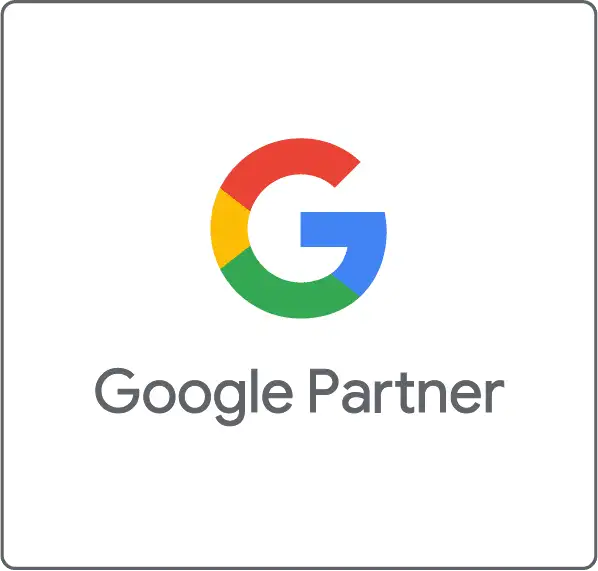
BrillMedia.co started because we saw an opportunity to give businesses access to the same tools, capabilities and expertise that are usually reserved for large advertisers with hundreds of millions of dollars to spend. In 2010, advertising took a turn towards mass automation with behavioral data and algorithms decisioning. Both create powerful ways to reach consumers. I was there helping transition my agency employer into the age of programmatic ad buying and I was an early adopter of this new age of digital advertising. So, we began in 2013 to offer marketing and advertising solutions to small and mid-size businesses so that they could benefit from these massive opportunities. Since then, we’ve taken on multiple agency clients and advertisers who want to leverage data and automation in their advertising practice.
Hyperlocal advertising is the crux of Brill Media’s advertising and marketing business. With this technique, we paint rich pictures of users and the locations they go. We combine data from people, their ever-present mobile devices, and real-time data streams. Hyperlocal data tells us where users are, where they’ve been and what they’re interested in. In short, the places people go define who they are.
Robert Brill, Co-Founder and CEO, BrillMedia.co, explains why Hyperlocal advertising is a boom for businesses ranging from large Fortune 500 advertisers to local marketers. And how this data is created, why it’s so important and how it can help you today.
Advertisers use hyperlocal data to merge location activities, data segments and ad buys into fine-grain user profiles.
While conducting client ad campaigns, we regularly get asked a few basic questions about user location data:
How do advertisers determine user locations?
Global Positioning Systems (GPS) provide the most accurate location data available to marketers. As users’ apps and mobile operating systems ping communications satellites, their mobile devices gather data about their geographic locations . With this data, apps can show users nearby restaurants, where they are on maps, etc.
‘You typically have to choose to turn on device-based location services, which are services that use information such as GPS signals, device sensors, Wi-Fi access points, and cell tower IDs that can be used to derive or estimate precise location.– Google
What type of location data do advertisers prefer?
Apps that collect GPS user data often share this information in ad calls (bid streams) when requesting ads from ad exchanges . Through the bid stream and through advertising technology partners advertisers, use this data to target users.
Advertisers use IP addresses, another very accurate form of data, to identify either specific buildings or zip+4 areas (small groups of buildings). Because small and mid-sized businesses typically share IP addresses, advertisers rarely target these IPs. Instead, they use IP addresses for big businesses (corporations, convention centers and some hotels) to reach targeted audiences.
Less-accurate location information like registration and search data (e.g., people Googling restaurants in Sherman Oaks, CA) can reveal users’ interests, but not their current locations.
Hyperlocal Advertising Agency
BrillMedia.co started because we saw an opportunity to give businesses access to the same tools, capabilities and expertise that are usually reserved for large advertisers with hundreds of millions of dollars to spend. In 2010, advertising took a turn towards mass automation with behavioral data and algorithms decisioning. Both create powerful ways to reach consumers. I was there helping transition my agency employer into the age of programmatic ad buying and I was an early adopter of this new age of digital advertising. So, we began in 2013 to offer marketing and advertising solutions to small and mid-size businesses so that they could benefit from these massive opportunities. Since then, we’ve taken on multiple agency clients and advertisers who want to leverage data and automation in their advertising practice.
How do beacons impact hyperlocal advertising?
Today’s advertisers increasingly rely on beacon location data. InMarket, a hyperlocal data provider, operates beacons in stores across the United States. Just like lighthouses, beacons beam repeating messages to all devices that can receive them. Beacons can communicate with Android devices when users enable Bluetooth and both Android and iOS devices via apps. For example, suppose you walk into a Macy’s store, and the Macy’s app is running on your phone (in the background). When you come within 70 meters (229 feet) of a beacon, your app alerts the Macy’s corporation. This retailer may send you a coupon, a special offer, or another type of message.
InMarket maintains a network of app partnerships and integrates the InMarket software development kit (SDK) into hundreds of these apps. When a user with one of these partner apps on their phone comes in range of a beacon, InMarket knows their location. For example, user ABC123 (aka Robert Brill) browses the cookie aisle at Ralph’s on a regular basis. Because InMarket knows I love cookies, it displays Oreo ads when I go online.
This scalable technology allows InMarket to track 50 million U.S. adults via its infrastructure and partnerships. That’s right; advertisers can target millions of consumers at a remarkably granular resolution of only 229 feet!
How accurate is location data?
Our partners use a variety of location methods to ensure the accuracy of their location data. One of these, Factual, says only 30% of advertising technology location data is accurate, for three reasons:
- Advertisers have trouble identifying users in dense urban areas due to GPS signal interference.
- The current ad tech ecosystem doesn’t include valuable location data such as the speeds at which users move through environments .
- Because the industry hasn’t yet established standard metrics, different devices and apps share location data with varying degrees of accuracy.
Because advertisers must disregard 70% of location data, advertising technology companies need to scrub data to ensure its accuracy.
‘Location Validation cleans out imprecise and invalid data from the mobile adtech ecosystem, so you can target ads effectively.’– Factual
Factual’s 5-step guide to location data accuracy
Look at the decimals in latitude/longitude coordinates. More decimals in this data mean signify more precise user locations . Three decimals, for example, mean users may be up to 100 meters away from the specified location.
- Wipe away odd and erroneous data created by coding errors. For example, your data could show an inordinate number of users at a location in the middle of nowhere. These people haven’t all gathered in the wilderness; rather, the data show them at a dummy location defined by the app as a placeholder.
- Analyze and reverse out-of-bounds latitude/longitude coordinates. The data may show a user in the middle of the ocean. By reversing these numbers, you will find their correct location in a major city.
- Ignore the over 650k default locations shown by apps when no other data is available (such as the geographical center of the U.S.)
- Block bad devices whose geographic data is inconsistent with human activity . For example, a mobile device could show coordinates from all over the world in a timespan so short no person could actually travel that distance.
Once filtered with over 600 billion data points monthly, BrillMedia.co campaigns leverage premium location inventory fit for our premium advertisers.
Hyperlocal Advertising Agency
BrillMedia.co started because we saw an opportunity to give businesses access to the same tools, capabilities and expertise that are usually reserved for large advertisers with hundreds of millions of dollars to spend. In 2010, advertising took a turn towards mass automation with behavioral data and algorithms decisioning. Both create powerful ways to reach consumers. I was there helping transition my agency employer into the age of programmatic ad buying and I was an early adopter of this new age of digital advertising. So, we began in 2013 to offer marketing and advertising solutions to small and mid-size businesses so that they could benefit from these massive opportunities. Since then, we’ve taken on multiple agency clients and advertisers who want to leverage data and automation in their advertising practice.
How should advertisers use hyperlocal advertising?
Consider these top-level hyperlocal marketing applications:
- Restaurants: Serve ads to users within 2-5 miles of your address. Pinpoint the key times of day people make food decisions. For example, surround users from 4-9pm to influence dinner time decisions.
- CPG (Consumer Packaged Goods): Surround your distribution points with targeted ads. For example, Ralphs serves ads that target Ralphs shoppers; people who have been seen at Ralphs in the last week based on their device ID location. Share coupons to collect email addresses and capture other user data.
- Spirits: Surround key U.S. nightlife areas. Serve ads to over-21 users who visit bars/clubs between 9pm and 2am on Thursdays, Fridays and Saturdays.
- Traditional Sports Advertisers: If sports advertising is part of your media mix, add a hyperlocal component. For example, you can target Dodgers fans by serving digital ads to users at Dodger Stadium during games.This strategy applies to professional sports, college sports, and live entertainment events (such as concerts).
- Conferences: Combine latitude/longitude targeting, IP address targeting and email address remarketing to surround users currently attending particular conferences . Use this marketing tool to drive people to booths, and maintain contact after the event.
- Narrow-Cast Audience Targeting: Some advertisers want to combine location and over 100k audience data segments. Recently, our clients have combined zip code targeting and audience data targeting. With this strategy, advertisers reach users in multiple segments. For example, you may want to target people with 1) household incomes above $100k; 2) who are actively shopping for homes; and 3) prefer a property within a particular 2- to 3-mile radius.
- Local Plumbers: Use Facebook targeting to narrow down ads to a 2- to 3-mile radius. Filter for keyword targets and find users asking their Facebook friends for plumber referrals.
In summary, advertisers use hyperlocal advertising to reach local consumers with data points that match targeted interests, activities and lifestyles. The best hyperlocal data comes from GPS data, though other data is useful in certain cases. Though advertisers can collect a lot of data, only work with partners who scrub out erroneous and inconsistent data. Finally, create a hyperlocal data strategy for driving your business’ bottom line and deploy a customized advertising targeting.



